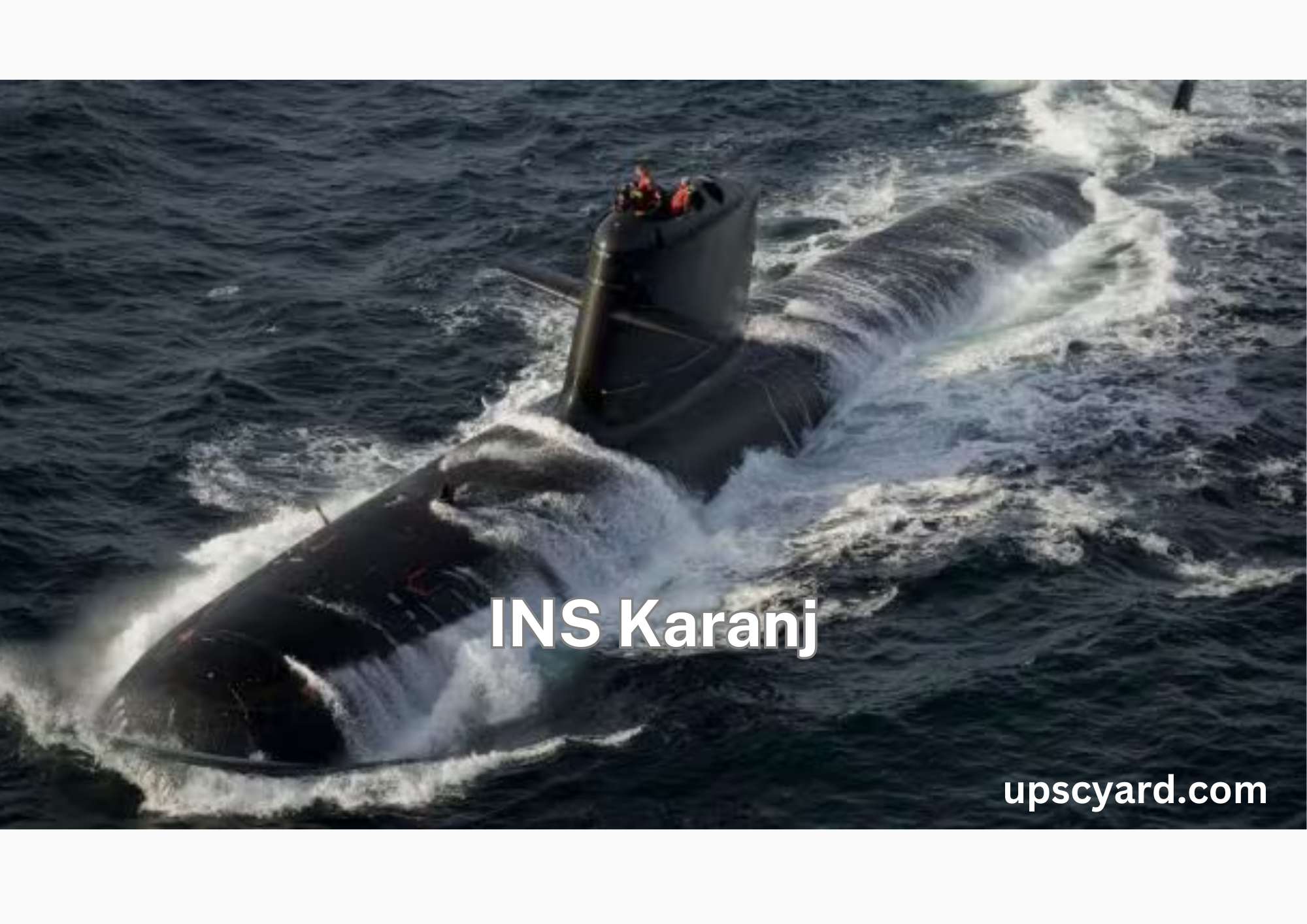Important key Points on INS Karanj
- The INS Karanj, a Russian-origin submarine, was commissioned in 1969 in the former USSR and served the nation for 34 years until 2003.
- The new INS Karanj is now part of the Western Naval Command’s submarine fleet.
- The name “Karanj” is believed to be derived from Karanja Island, also known as Uran Island, situated in the Raigad district to the southeast of Mumbai Harbour.
- The Indian Navy has its base in Uran, near Navi Mumbai.
- Project 75 is an Indian Navy program aimed at constructing six Scorpene Class attack submarines.
- It receives support from the Department of Defence Production under the Ministry of Defence and the Indian Navy throughout its construction phases.
- Mazagon Dock Limited (MDL) is responsible for manufacturing these six Scorpene submarines.
- The technology assistance for the project comes from Naval Group of France.
- The project was initiated under a USD 3.75 billion deal signed in October 2005.
- MDL, often referred to as the “Ship Builder to the Nation,” is one of India’s premier defense public sector undertaking shipyards, operating under the Ministry of Defence.


The Indian Navy has welcomed its third Scorpene-class conventional diesel-electric submarine, INS Karanj, into its fleet.
Preceding this addition, the class’s initial submarine, INS Kalvari, became operational in December 2017, followed by INS Khanderi in September 2019. Additionally, the fourth submarine, Vela, entered the water in May 2019, while the fifth, Vagir, followed suit in November 2020. Both Vela and Vagir are currently undergoing sea trials, and the sixth submarine is undergoing advanced outfitting.
The Scorpene class submarines stand among the world’s most advanced conventional submarines, boasting exceptional stealth capabilities. These vessels incorporate cutting-edge acoustic silencing techniques, maintaining remarkably low radiated noise levels, and possessing the capacity to deliver precision-guided weaponry.
In the service of the Indian Navy, these submarines will fulfill various mission roles, including area surveillance, intelligence gathering, anti-submarine warfare, anti-surface warfare, and minelaying operations. They come equipped with an arsenal that includes six torpedo-launching tubes, 18 heavy weapons, tube-launched MBDA SM-39 Exocet anti-ship missiles, and precision-guided munitions. This armament empowers them to launch devastating assaults on both surface and submerged adversary targets.




